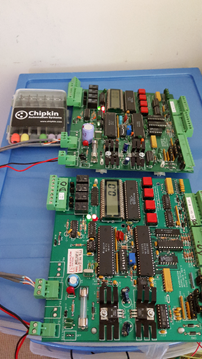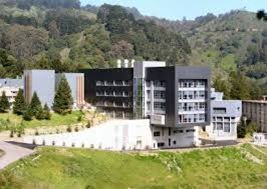Case Study: Barrington Systems - US Department of Energy Lab

Introduction:
The Department of Energy National Lab at Berkeley (lbl.gov) is a center of scientific excellence. 12 Nobel Prizes, 70 members of the US national Academy of Sciences. It is home to an accelerator, a super computer and many other research facilities. Competition for use of the labs facilities and equipment is fierce and maximizing up time is critical.
HVAC in the over 70 buildings that make up the lab is controlled using obsolete Barrington Systems equipment. The last year of business for Barrington was 2006.

Background:
The HVAC function at the lab is not only about making the buildings habitable and suitable for work. It also includes providing temperature and humidity stability for various items of scientific equipment.
Almost all the HVAC and building automaton function is performed using Barrington Control Systems. These consist of MicroStar field I/O units connected by RS485 and a head end controller called a LanStar. Each LanStar can support two trunks of 16 MicroStar's. Barrington also provided visualization and HMI software. The LanStar's are connected together to provided an integrated site wide system. In some cases the connections are made using the LanStar ability to connect to others using the inbuilt Lan system. In (most) other cases the LanStar is connect to the operations control room using home runs, phone lines and whatever was used at the time of installation.
The lab has gown organically over the years with over 70 buildings in a campus type arrangement on the hills above Berkeley California. To minimize project costs over the years a number of elements of the HVAC automation and control system use short cuts to connect to each other. In some case long multi spliced cables, in others, use of phone lines and modems and borrowing spare conductors in cables.
Goal and Justification
Its expensive to replace field I/O modules and cheap to replace controllers. The main reason for the massive discrepancy in price is the cost of labor and conduit required to rewire all the field devices to new I/O modules and all the time troubleshooting the problems that arise from out of date drawings and labels.
Replacing the controllers buys time – it allows you to spread the project over many years and it allows for a phased approach which means shutdowns are required less often. It also suits budgeting – allowing an facility to pay for an upgrade over many years instead of all at once .
The goal of this project is to replace the entire Barrington System in a cost effective, production effective and resource effective way. This will be done by slowly replacing the LanStar's with new BACnet based controllers. As a 1st phase, the gateways convert the data to BACnet/IP. This allows a new HMI to be developed (and tested). Then new controllers can be programmed to perform the work the LanStar's did and then the LanStar's will be removed and the new controllers will talk directly to the trunks of MicroStar's.

Making Life Easier
The Barrington LanStar and MicroStar gateways are capable of auto discovery, For example, you can connect a gateway to a LanStar. It discovers all the MicroStar's connected to it (on both trunks) and then automatically makes the corresponding BACnet objects for each Ai, Di, Ao, Do etc in each MicroStar.
Discovery saves time and improves accuracy.



